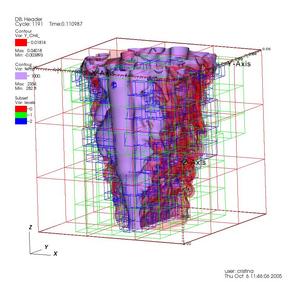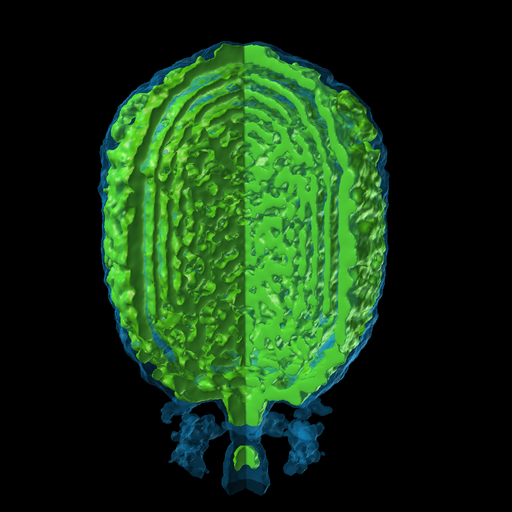This is an archival copy of the Visualization Group's web page 1998 to 2017. For current information, please vist our group's new web page.
SC 2006 LBNL Visualization Group Demos/Projects/Presentations

|
Table of Contents
NERSC related projects
Posters
- Visualization and Analytics Center for Enabling Technologies (VACET)
- Scientific Data Analysis via Statistical Learning
- Journal Cover Art
Booth Movie
SciDAC Movie
Gallery of Images
NERSC related projects
Using VisIt to visualize and analyze AMR data of Turbulent Reactive Chemistry Simulations

|
- Title: Using VisIt to Visualize and Analyze AMR data of Turbulent Reactive Chemistry Simulations.
- Description: VisIt is a free interactive parallel and distributed visualization and graphical analysis tool for viewing scientific data on Unix and PC platforms. It was designed to handle very large data set sizes and it provides readers for a variety of AMR data formats. We will show the capabilities of VisIt to visualize and analyze AMR data of Turbulent Reactive Chemistry Simulations. We will be running the demonstration in a state of the art 8 CPU, 16 core Opteron with 64GB of RAM, with the system supporting a 10TB file system connected via a 2GB/s fiber channel intertconnect.
- Web page for the self-guided demo.
NERSC Incite7: Plasma Wakefield Acceleration Visualization

|
- Title: Incite7: Plasma Wakefield Acceleration Visualization
- Description: 3D visualizations of the 2006 NERSC Incite project: "Particle-in-Cell Simulation of Laser Wakefield Particle Acceleration".
- Web page for the self-guided demo.
Bacillus subtilis bacteriophage Phi 29 reconstruction

|
- Title: Bacillus subtilis bacteriophage Phi 29 reconstruction
- Description: Cryo-EM and single molecule biophysical studies of dsDNA packaging in Bacillus subtilis bacteriophage Phi 29.
Posters
- Title:
SciDAC2 Visualization and Analytics Center for Enabling Technologies (VACET)
Abstract: "Seeing the Unsee-able"
The Visualization and Analytics Center for Enabling Technology (VACET) focuses on the creation and deployment of scientific visualization and analytics software technology to increase scientific productivity and create new opportunities for scientific insight. The goal is to respond to the urgent needs of the scientific community by providing significant, production-quality technology to aid in data understanding.
Contact: Wes Bethel - Title:
Scientific Data Analysis via Statistical Learning
Abstract: The emerging field of scientific data mining addresses the need for scientists to search for, quantify, and visualize information from massive data sets generated by large scale observations and simulations. We demonstrate the enormous potential of statistical machine learning algorithms to provide data-driven solutions to fundamental scientific questions in astrophysics and climate modeling. We present results from ongoing projects at LBNL, including the search for Type Ia supernovae from astronomical observations, and the analysis of hurricanes and tropical storms in climate simulations.
Contact: Raquel Romano
- Journal Cover Art 2005-2006: Covers.pdf